Dry gardens explained - 10 expert tips for a lush but drought tolerant urban space
Choose the right combination of plants for dry gardens and put them in the right position for a low-maintenance and eco-friendly choice
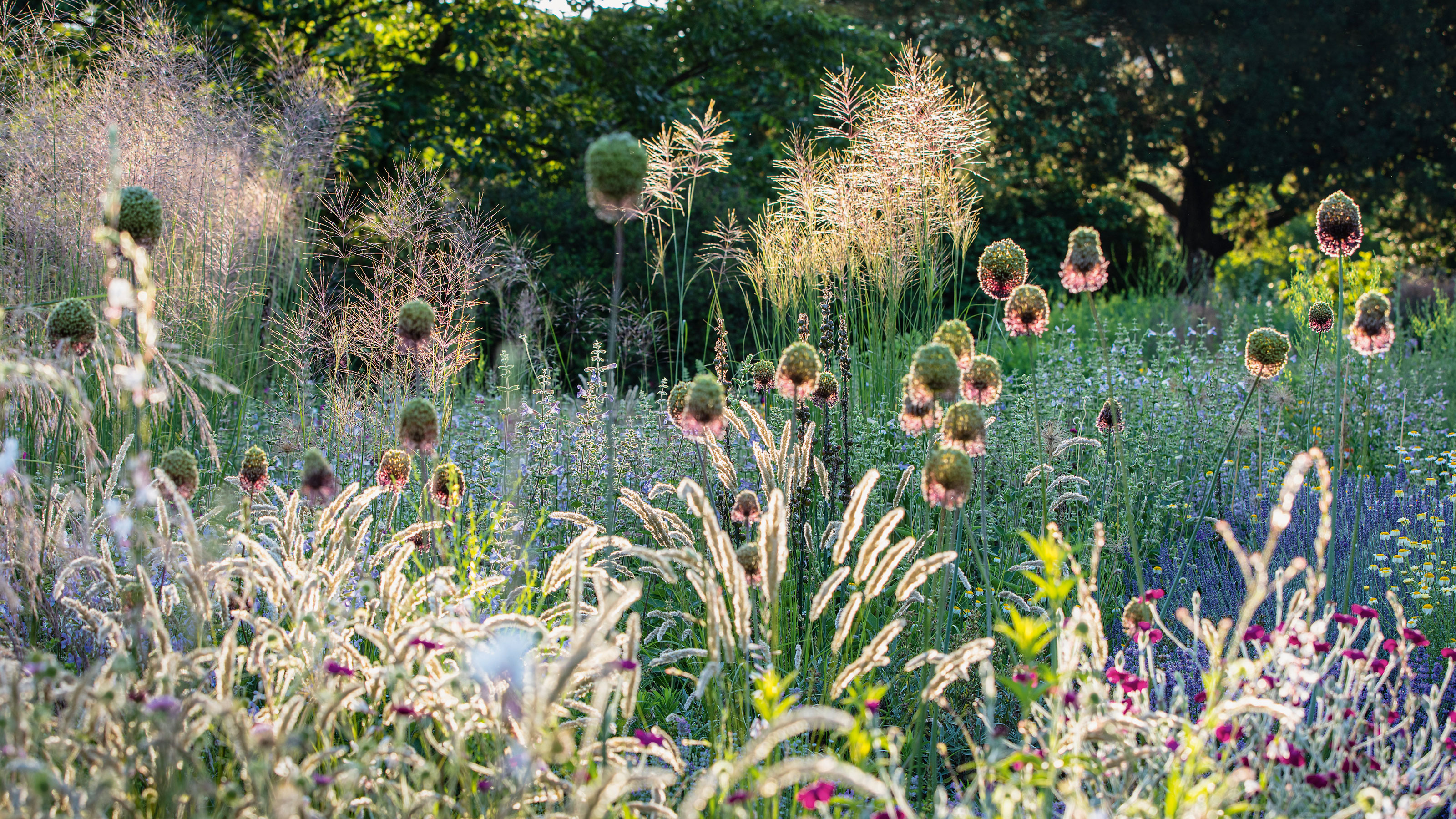
Dry gardens gets their name from the fact that they're never watered, relying solely on rainfall. How good does that sound - freedom from watering duties for ever. But that's not their only benefit. Our summers are getting hotter and drier because of climate change. This means it's a good idea to choose plants that will cope with dry soil and no additional watering if you're concerned about water consumption.
Although the name doesn't sound particularly appealing you can still have lush foliage and soft textures if you're clever about dry garden design. Creating dry gardens is easy to do and it requires less maintenance than regular gardens as you generally leave it to get on with things. It taps into the sustainability trend too, saving water by using drought tolerant plants and mulching with gravel to keep the soil moist.
A dry garden is one that is predominantly hot and sunny with free-draining soil that suits Mediterranean-type planting to withstand dry or drought conditions. You might have heard it referred to as 'xeriscaping', which is the buzzword for gardening that reduces the need for watering.
All you really need to do is remember the simple rule of right plant in the right place. A simple approach to modern gardens, and the rest is easy.
Dry gardens explained
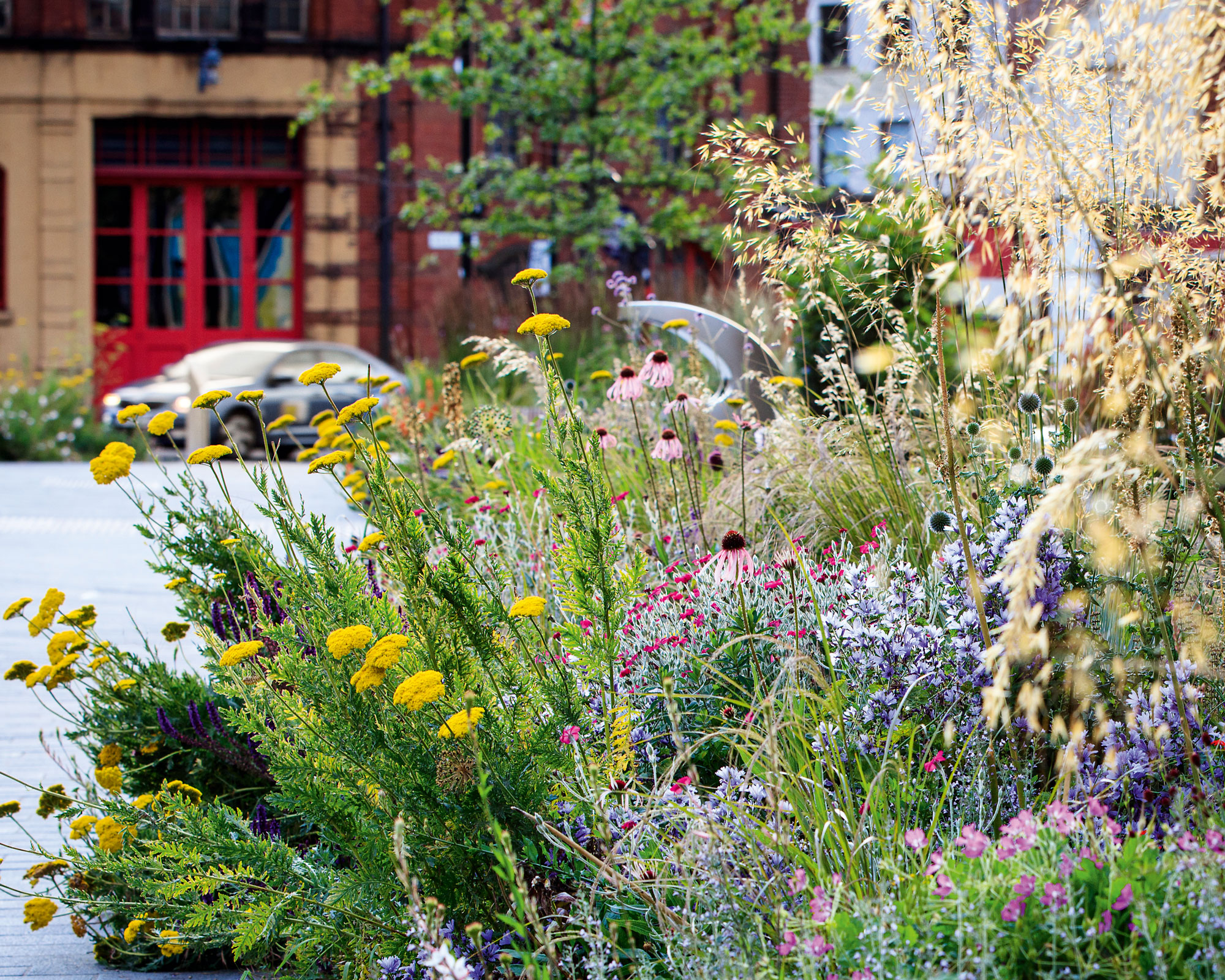
Grey to Green City Garden Sheffield, England designed by Zac Tudor and Sheffield City Council landscape team
1. Plan a dry garden carefully
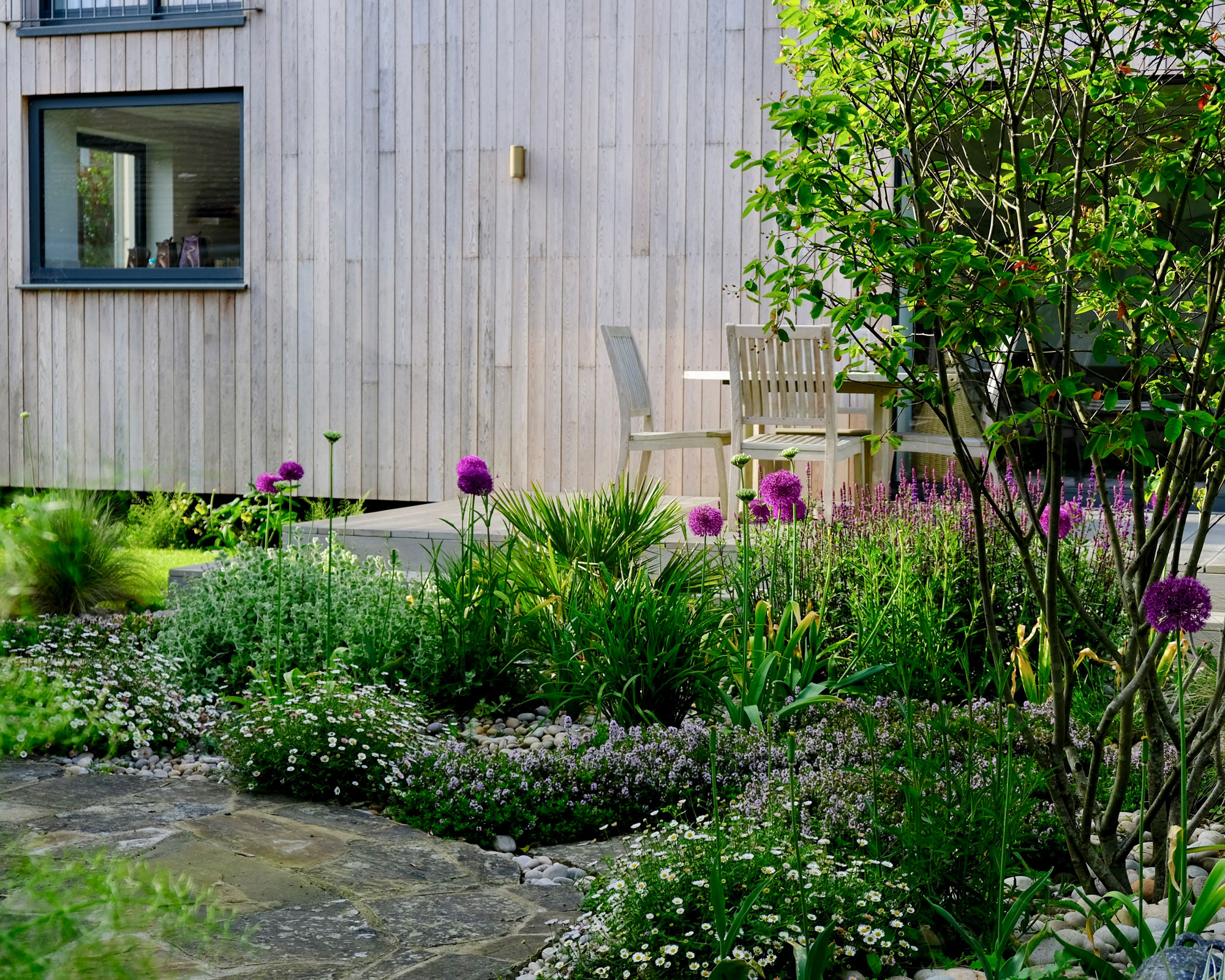
Garden designed by Sue Townsend
First think about your garden. What type of soil do you have? How much sun does your garden get? Choose plants that are suited to dry and sunny conditions that don't need lots of watering such as ornamental grasses and self-seeding annual plants like poppies and the tall, airy stems of verbena bonariensis.
Drought tolerant plants tend to share a range of characteristics that help them conserve moisture so that they can cope in areas of low rainfall. It's a good idea to give them enough room to spread around by expanding your planting beds. So it could be time to reduce the size of your lawn (if you have one) to free up more space for plants, especially as they never tend to do very well in small urban gardens anyway.
'When it comes to landscaping picking a local loose stone or gravel for a mulch works well in terms of fitting in with the local environment and is good for reducing carbon footprint with transport,' says garden designer Sue Townsend. 'For seating areas the stone, pavers or wood chosen should complement the property and the loose stone used as a mulch.'
2. Choose the right spot
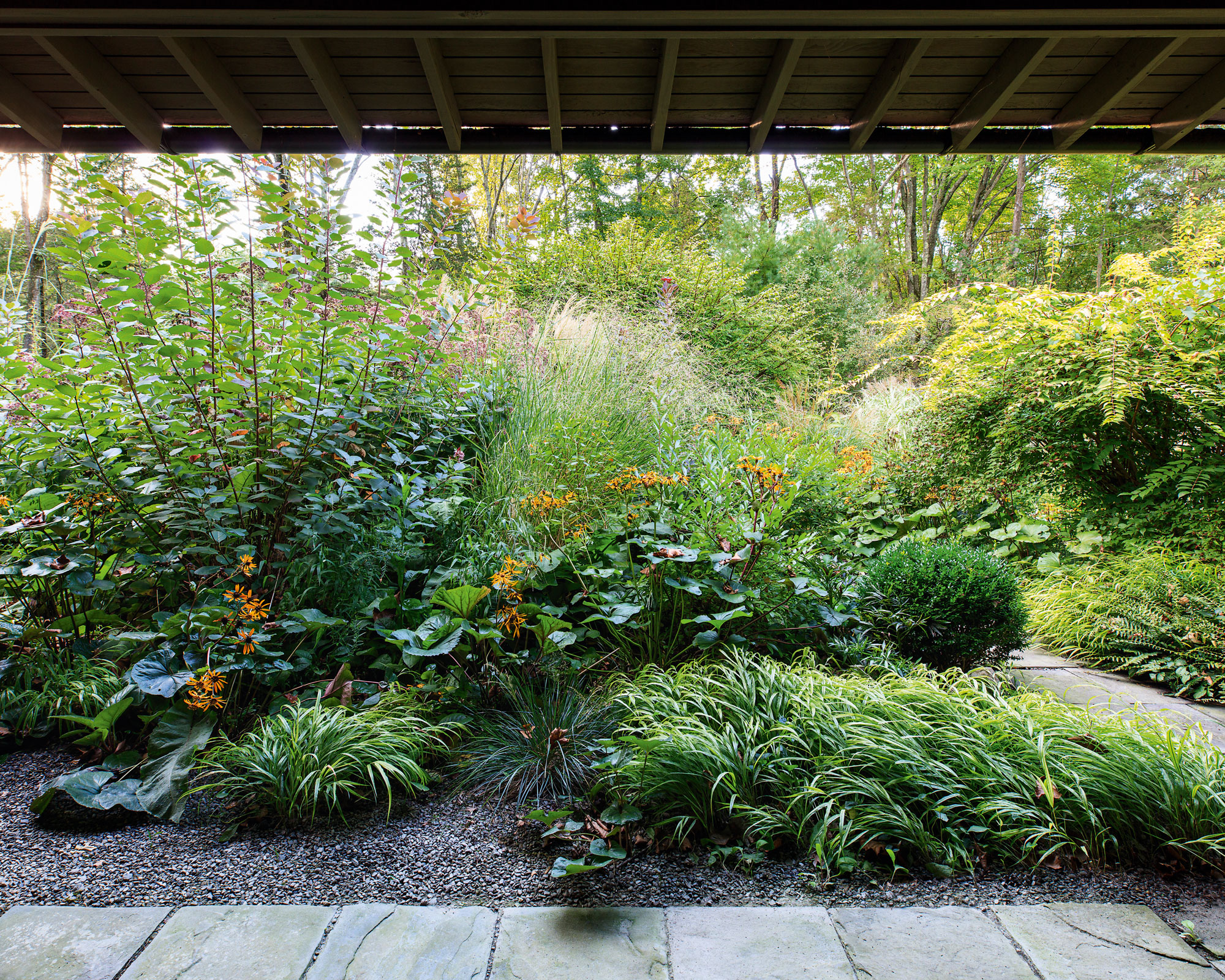
Federal Twist garden in Stockton, New Jersey designed by James Golden
Most of the plants that tolerate dry conditions also love sun so the ideal site is south or west facing, with little or no shade. Dry garden plants dislike cold, wet soil so the ground should be free-draining for the best results.
Work with your garden not against it. ‘The site must be free draining, so avoid or improve areas where water naturally sits, in particular clay soils,’ recommends garden designer Tom Hoblyn.
Drought tolerant plants generally have low nutrient needs. Ideal for low maintenance gardens, do not add any extra fertiliser as this can encourage lush growth which then needs more water in summer and is more easily damaged by frost in winter.
3. Pick plant combinations that work

Garden designed by Åsa Gregers-Warg, head gardener at the Beth Chatto gardens in Essex, England
Choose plants that naturally grow together in hot dry regions as you can be confident they will look good together and thrive in the space. Accentuate the different characteristics of plants so they enhance each other. Repetition of colour, shape or form creates a rhythm and guides the eye through the design, giving the planting a cohesive feel.
For your flower beds, look for small-leaved plants that lose less water. Lavender is ideal, as is silvery foliage that reflects the sun like sea holly and succulent foliage such as sedum that stores moisture.
Herbaceous plants that work well in dry gardens include catmint (Nepeta), globe thistle (Echinops), red-hot pokers (kniphofia), yarrow (achillea) and euphorbia. Rosemary, sage and thyme are also good choices.
'To create a mid-layer try planting a mix of lavender, cistus, santolina and euphorbia,' says Åsa Gregers-Warg, head gardener at Beth Chatto. 'Add splashes of colour with agapanthus and nepeta, while verbena bonariensis and Russian sage make superb vertical shapes.'
4. You can never have enough grasses
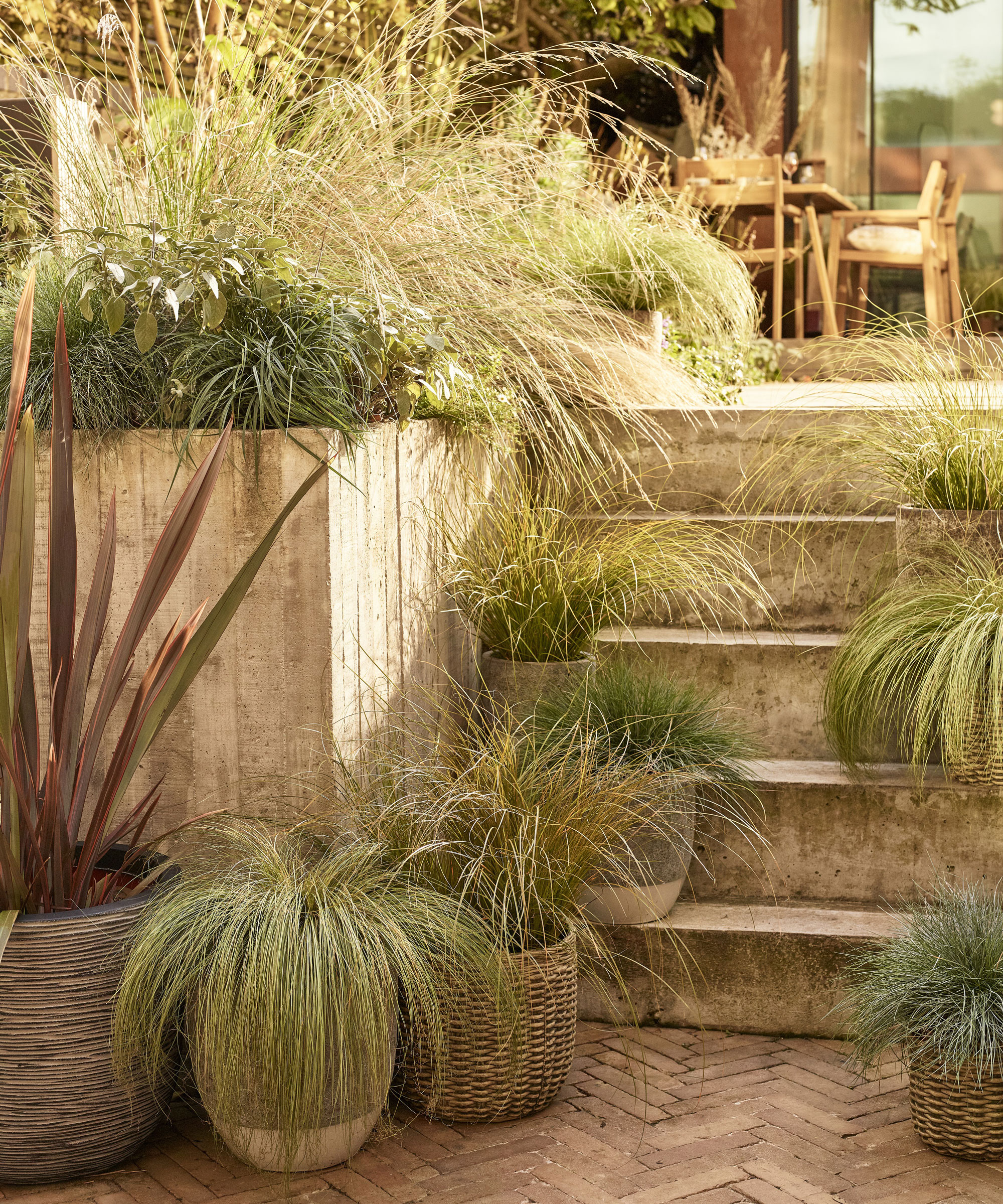
Handsome architectural grasses add a mixture of structure, form and texture to dry gardens for a naturalistic effect. Easy to grow and low maintenance, grasses let you add some height and form to help divide up your space and add some drama, either in the garden or in pots.
Rhythmic planting of airy grasses creates texture and interest all year round. The trick is to plant one type of grass in a big loose block to maximise the impact. The rippling grass takes centerstage, especially in small gardens.
The best varieties to choose for dry gardens include blue fescue (Festuca glauca), fountain grass (Pennisetum), golden oats (Stipa gigantea), miscanthus, pampas grass and switch grass (Panicum virgatum). For softness, plant ornamental grasses like Stipa gigantea and Stipa tenuissima. Let ground cover plants such as thyme and Stachys byzantina weave in between these taller grasses.
5. Get dry garden plants off to the best start

Garden designed by James Hitchmough (Sheffield, England)
Even the most drought tolerant plants may need some help to get started in your garden. Some sun-loving plants are not very hardy so check before you buy. Choose young plants so they get used to their growing environment as they develop and ideally plant them in autumn or spring.
When first planting you may need to look at water requirements. If the soil is dry, fill the planting hole with water to get the moisture down to the roots. Then put the plant in and backfill with dry soil to help seal in moisture. After planting, mulch with water-retaining materials such as gravel or bark.
Don't enrich the soil with fertiliser, and water sparingly once plants get established, then leave them to their own devices. Poor and stony soil is a bonus in dry gardens where you want to grow a wide range of groundcover plants with little maintenance. Weeds grow less easily than they would in rich soil, and groundcover plants can spread comfortably without the risk of being swamped by competitors.
6. Include gravel in your landscaping materials
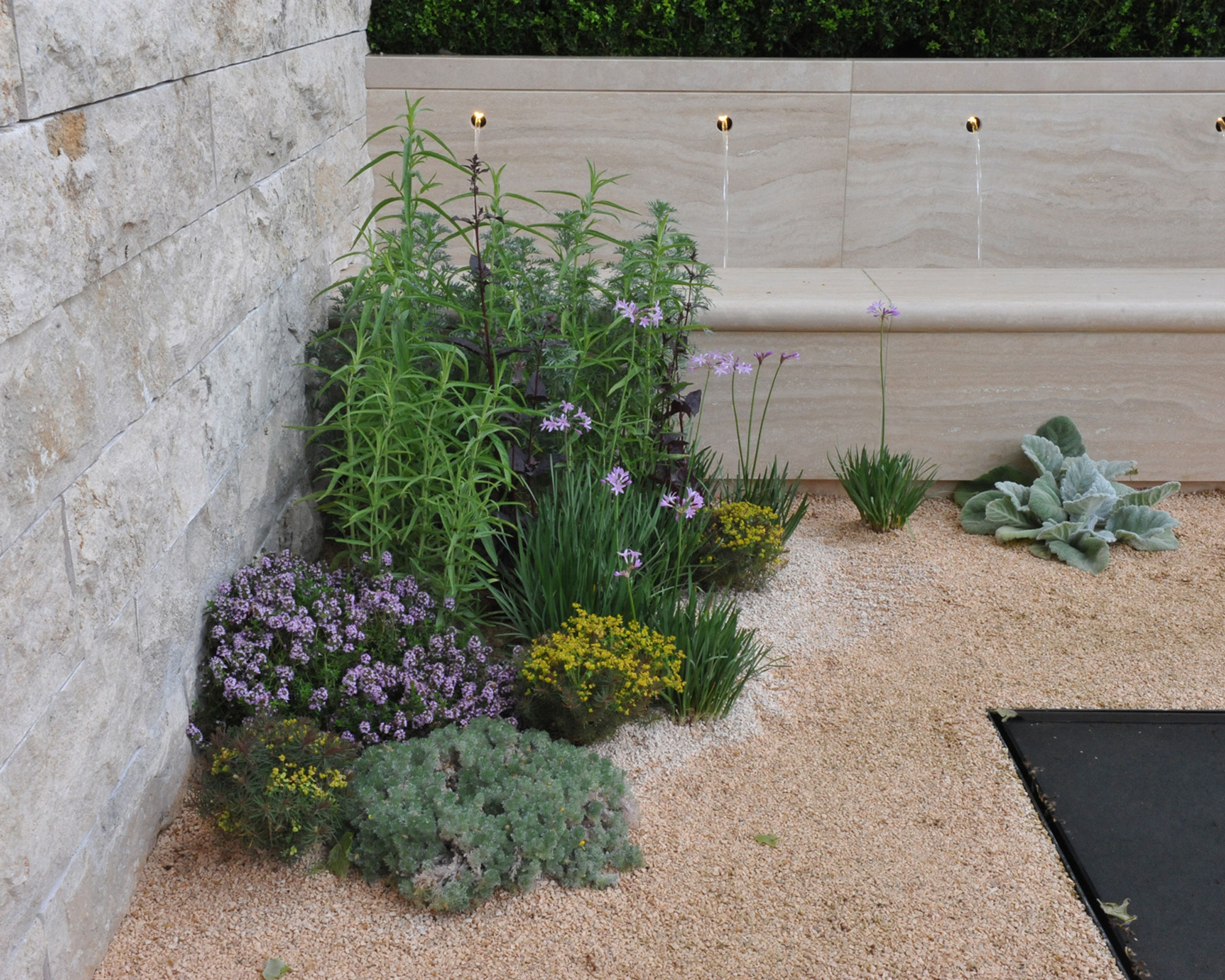
Gravel garden design by Thomas Hoblyn
Selecting the right stone is as important as making the right plant selection. The gravel garden is a good option to make your plants stand out, and will suppress weeds almost entirely. This balance between plant and stone is very characteristic of dry Mediterranean landscapes.
If your soil tends to retain moisture try working in gravel or sand to help improve drainage. You can also use gravel as a mulch to prevent weeds spreading. Pick a local loose stone or gravel that fits with the local environment and is good for reducing carbon footprint when it comes to transport. Other natural durable materials to consider for dry gardens include textured stone, rock and hardwoods.
You can also plant directly into gravel with dry garden plants. 'If you’re planting into deep gravel, be careful that the roots get contact with the subsoil. It’s best to create mounds of soil to plant into then mulch with the gravel afterwards, carefully tucking some gravel in and around plants,’ says garden designer Tom Hoblyn.
Gravel doesn't have to be boring either as it now comes in a range of shades including cream and gray, as well as black basalt and red granite so there's plenty of scope for experimenting with your look.
7. Look at nature for inspiration
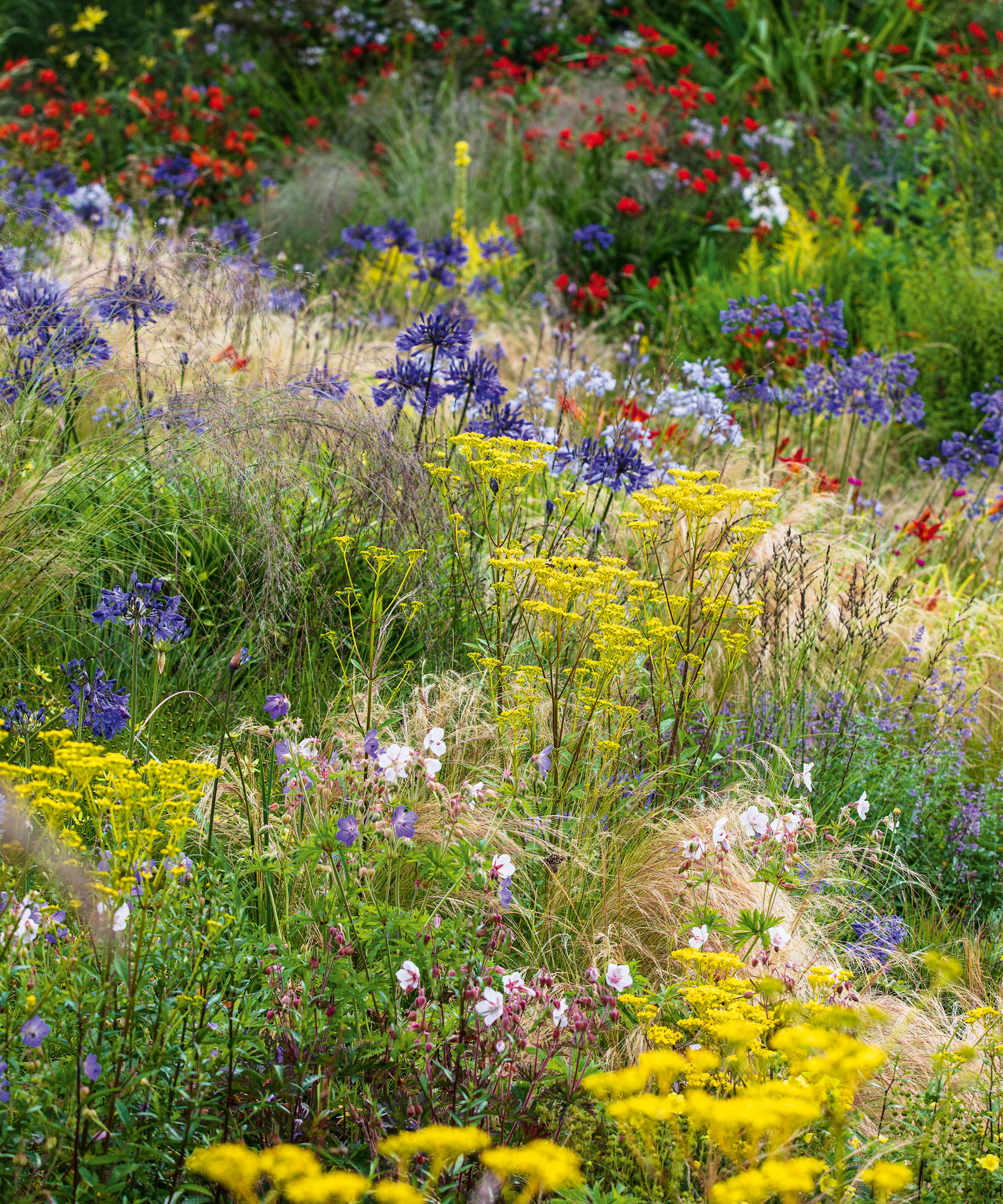
Wildside garden near Buckland Monachorum, Devon, England designed by Keith Wiley
Let your garden evolve in a natural way. As with the principles of wildlife gardening, leave the ground cover to evolve from year to year in a scheme that takes its lead from the soil, climate and planting. Let plants self-seed and spread around for a naturalistic style that suits dry gardens.
By taking inspiration from nature, it’s possible to opt for a ‘groundcover garden’ that is suited to local conditions and easy to maintain. Try mat-forming plants suitable for growing areas of green 'carpet' that can be walked on. In areas where there is no foot traffic, create large beds of perennials and shrubs whose dense foliage prevents light getting through to the ground, thus limiting competition.
Instead of the surface of the garden being covered with a uniform carpet of lawn, by using a variety of groundcover plants you can create layers of vegetation at different heights that's altogether more interesting.
8. Go for the eco choice
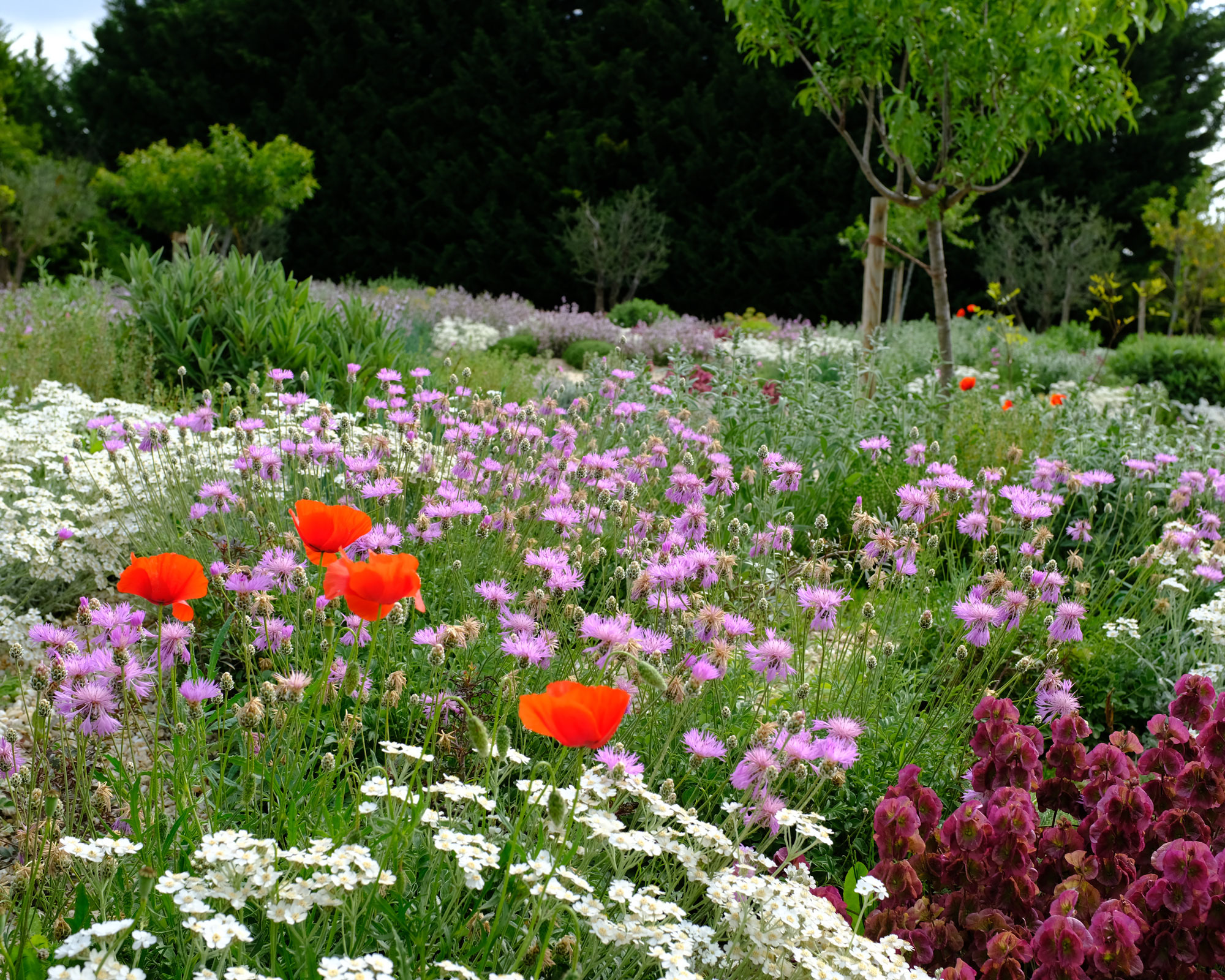
Garden designed by James Basson
There are plenty of eco-benefits to planting dry gardens too, including less watering and feeding (there is no need for fertilisers and chemicals), as well as less weeding and mowing if you do away with a high maintenance lawn.
A dry garden also provides a long season of nectar-producing flowers. ‘It creates an ecosystem that encourages a different type of flora and fauna that's high in biodiversity,’ says garden designer James Basson. Many dry-loving plants tend to be nectar-rich and beneficial to a vast range of insects.
Go to local nurseries and choose native plants that will thrive in your climate. This is another planet friendly choice as it helps keep down transportation, as well as helping to guarantee planting success.
9. Make containers work
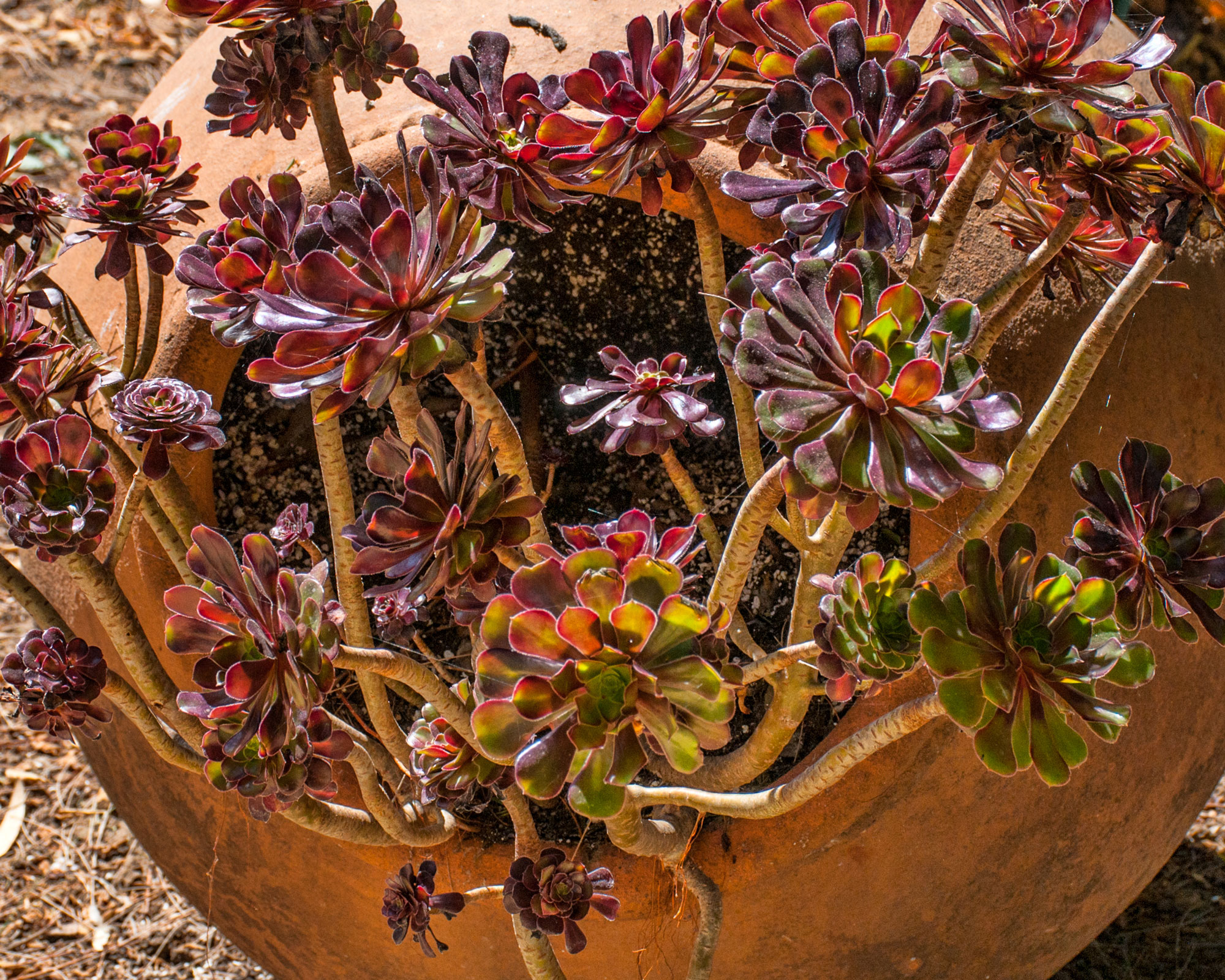
The succulent aeonium works brilliantly in a terracotta pot
Environmentally conscious dry gardening means finding ways to create gardens - including container gardens - that require little, if any, watering. So group together only plants with similar water requirements in the same container to reduce water waste and improve growing conditions.
The helps as water is used only where it's needed. Try drip irrigation systems that use less water than sprinklers and deliver water directly to the roots of the plants.
Use a potting mix that's quick-draining and water-retentive. Water-retaining polymers (hydrogels), for example, hold several hundred times their weight in water and release it gradually to the roots of the plant. Mycorrhizal fungi improve the ability of a plant to take up water and nutrients by working with the plant's root system and can be added to the soil before planting.
Use a layer of mulch covering the soil surface to help it retain moisture, reduce weed growth and improve growing conditions. Shredded or chipped bark, compost, and cocoa hulls are good mulches that help conserve water.
Choose plants like cacti and succulents, coneflowers (echinacea purpurea) and sea holly (Eryngium bourgatii) for a selection of low maintenance and minimal watering dry planting options that will thrive in containers.
10. Add showy gorgeous color (and drama)
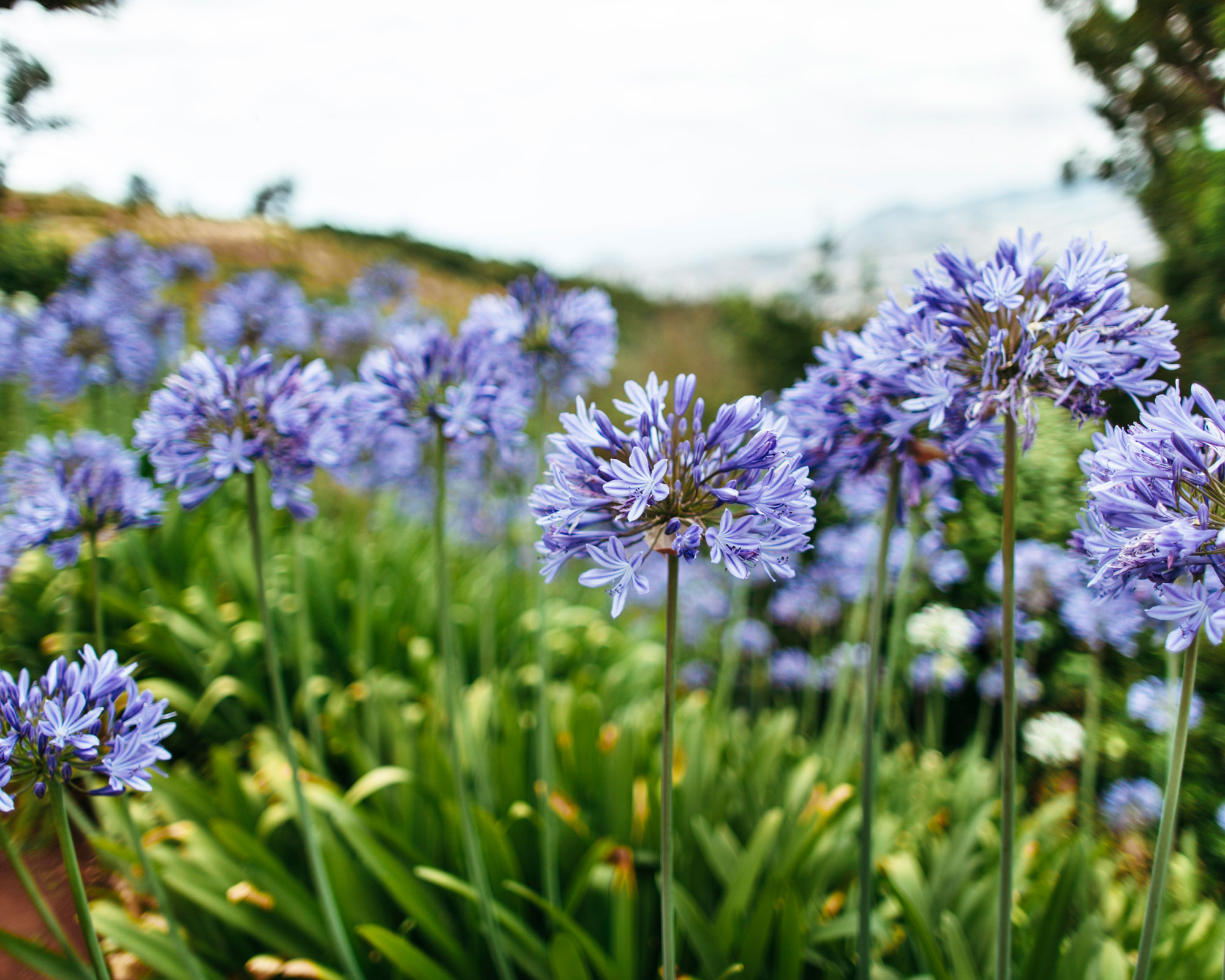
Agapanthus flowers have eye catching pompom blooms
Stunning agapanthus (the African lily) will withstand dry spells without stressing so is a natural choice for dry gardens. The spectacular globe-like flowers come in every shade of blue (as well as white) and are born on leafless stems about 1 to 2 feet high, adding sculptural definition to a planting scheme.
Another great choice for color, Echium (Pride of Madeira) can reach around 5 to 6 feet in height and has tall flower spikes covered in clusters of violet-blue (and white) blooms. Because it grows naturally on rocky cliffs, it can survive in dry soil so is an excellent choice for dry gardens. It will need watering regularly during its first year but then only during prolonged dry spells.
What's the key to pulling together a selection of drought-resistant plants that look good together?
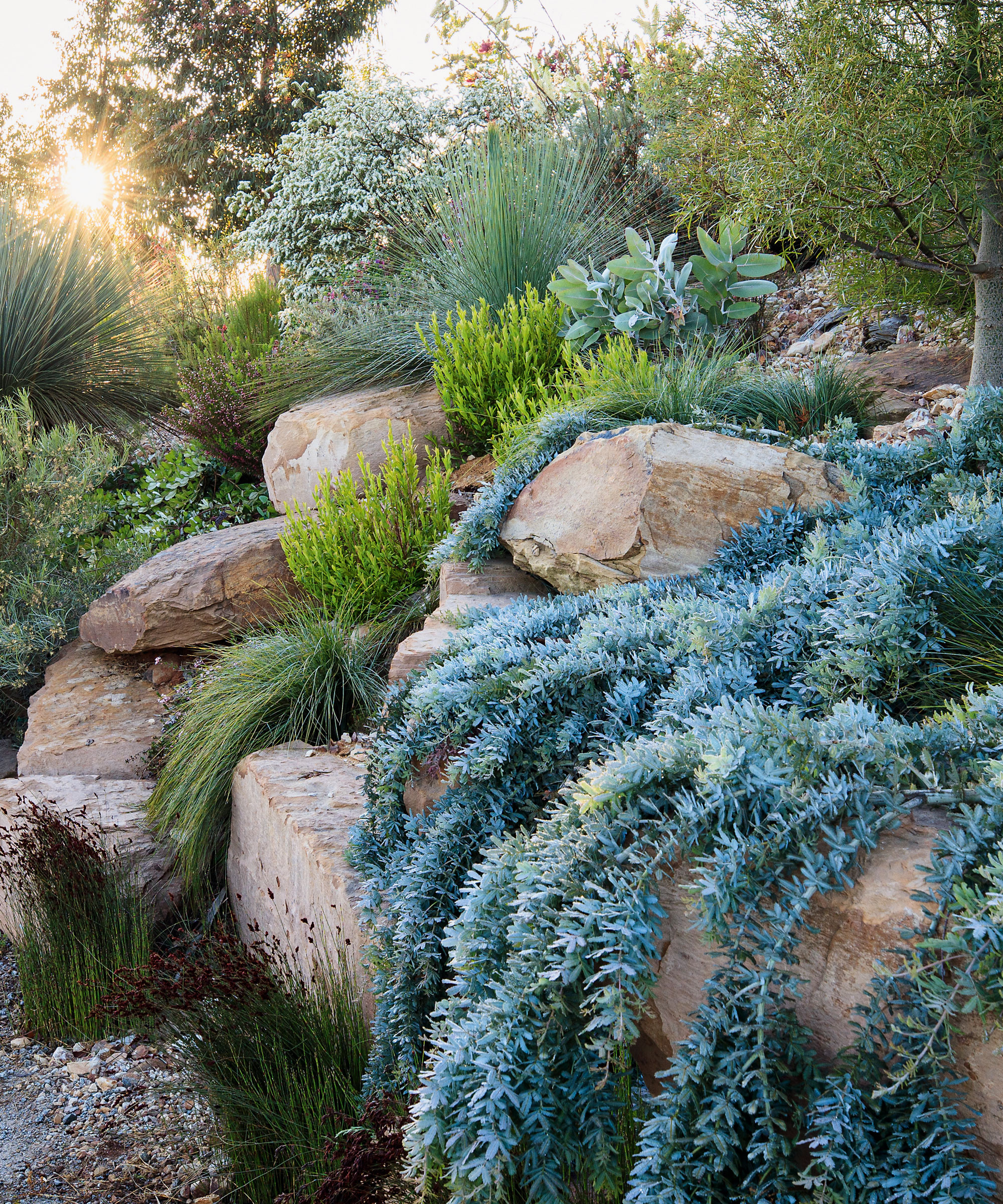
Woodend garden in Victoria, Australia designed by Phillip Johnson
We asked planting designer and horticultural consultant Noel Kingsbury for his expert advice:
'There's a lot of scope. Evergreen shrubs inevitably will tend to dominate because that is the dominant vegetation for of many dry summer climate areas. But there's also a role perhaps for a more limited range of herbaceous species.
'Grasses potentially have a very big role to play. Because there are so many that are well adapted to dry climates, look good, and crucially, have a really long season, there's seed heads that will continue to give interest long after the flowers are finished. Grasses also work very well with evergreen shrubs. They have a contrasting shape and texture, and a lightness of form that gives them a very refreshing contrast to the more solid hummocky shapes of evergreen shrubs.
'Plants have various adaptations for drought, small leaves, for example, and very often grey foliage. What we tend to find is that there is a certain look you get amongst these plants, so choosing plants on the basis of their being drought tolerant, you are actually effectively choosing also for a particular aesthetic and that's one that you can really make the most of because there's such a range of grey foliage plants with various forms and textures. And then contrasting with the occasional, perhaps slightly larger leaved dark green plants, for example, could be quite striking. And of course, with grasses.'
- Wild: The Naturalistic Garden by Noel Kingsbury with photography by Claire Takacs (phaidon.com) is out now
Be The First To Know
The Livingetc newsletters are your inside source for what’s shaping interiors now - and what’s next. Discover trend forecasts, smart style ideas, and curated shopping inspiration that brings design to life. Subscribe today and stay ahead of the curve.
Lifestyle journalist Sarah Wilson writes about flowers, plants, garden design and trends. She has studied introductory garden and landscape design and floristry, and also has an RHS Level 2 qualification in the Principles of Plant Growth and Development. In addition to homesandgardens.com and livingetc.com she's written for gardeningetc.com, Real Homes, Modern Gardens and Country Homes & Interiors magazines. Her first job was at Elle magazine, during which time a trip to the beautiful La Colombe d'Or in St-Paul-de-Vence led to an interest in writing about all things botanical. Later as lifestyle editor at Country Homes & Interiors magazine the real pull was the run of captivating country gardens that were featured.
-
 The 'New British' Style? This Victorian London Home Embraces Its Owners' Global Background
The 'New British' Style? This Victorian London Home Embraces Its Owners' Global BackgroundWarm timber details, confident color pops, and an uninterrupted connection to the garden are the hallmarks of this relaxed yet design-forward family home
By Emma J Page
-
 Muji Living Room Ideas — 5 Ways to Harness The Calming Qualities of This Japanese Design Style
Muji Living Room Ideas — 5 Ways to Harness The Calming Qualities of This Japanese Design StyleInspired by Japanese "zen" principles, Muji living rooms are all about cultivating a calming, tranquil space that nourishes the soul
By Lilith Hudson